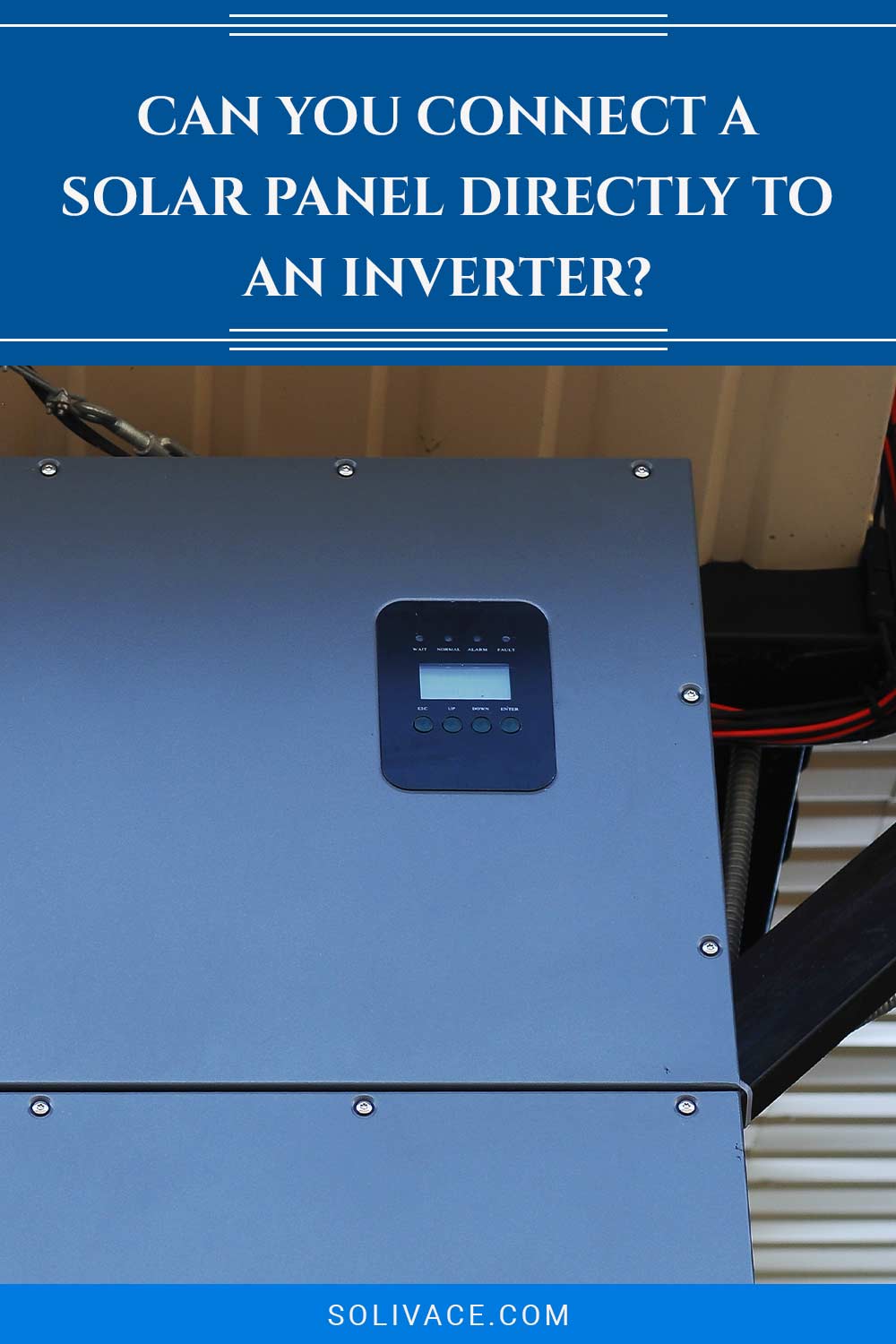Can You Connect A Solar Panel Directly To An Inverter?
We may earn commissions for purchases made through links on our site. Learn more on our about us page.
The simplest setup a person can have is a collection panel, which sends energy to the inverter, which converts that photonic energy into usable A/C power and is stored in a battery for later usage.
In short, the PV panels can be directly connected to the inverter, with the risk of overeating and overcharging included.
Multiple additional components will protect a system and help regulate the energy flow for maximum efficiency. To start, having this setup will need extra attention spent on checking the components and preventing any issues from occurring.

Is it Dangerous?
Potentially, this could be a very dangerous situation where the panels provide more power than the storage system can handle. However, there is a maximum level of power a battery can safely handle before complications arise.
These situations are easily handled by systems like MPPT solar inverter, which prevents any overheating by sending surplus power to the larger power grids as supplementation.
There are going to be many dangers with bare systems, which has been the main issue for years, but with the innovation of today’s technology, solar power collection will be a benefit to everyone willing to use the equipment.
How Can you Do it?
This is very simple; the panel must have enough sunlight to send a charge to the inverter for storage.
However, it is important to remember that too much energy can fry the system, test the collection levels for each day, and use enough power to prevent overheating and storage issues.
This is a very tedious method of collecting solar power, requiring constant diligence and loads of maintenance work to prevent failure and hazards like fire.
However, there will be devices and other hardware that can do this for a solar array owner, allowing them to focus on other aspects of the power collection.
How will it Work?
As mentioned in the earlier section, simple setups will only need a panel for collection, an inverter to take power and convert it into a usable form, and a battery to store the power.
It becomes a solar panel system owner’s prerogative from that battery to decide where and how the power is used.
Simpler setups, say to light a workshop, will only need an inverter to send power to the junction box and the batteries in storage.
How Long Does it Take to Do it?
Setting up a system will take a survey of the sun’s patterns in the area where you want to collect sunlight, designing the optimal position for solar cells to be built, and then the actual construction of the solar array itself.
After a year of surveying, the entire process can be done in months, and a person can immediately start collecting power.
When the proverbial switch is turned on, watch the meters and take readings on the system’s progress. This will help with collection efforts and produce efficient, safe solar power for home use or for industrial purposes.
Will You Ruin a Panel if You do it?
There will be a risk to the system, including the collection panel, that will come with having a solar panel system without regulation hardware and software.
However, any overheating under collection efforts that may fry a panel can be avoided by introducing a Maximum Power Point Tracker system that can help utilize collection data and create an efficiency plan to protect the system and battery storage hardware.
And, it can even send surplus power to the larger power grid as supplement power. The chance of damage to the panel will be lessened with equipment like the MPPT, and it is highly recommended.
Final Thoughts on Can you Connect a Solar Panel directly to an Inverter
There will be different setups for different electrical power purposes, many of which will not need to be tracked with equipment. However, these systems must be checked regularly to prevent any damage or chances of a fire from overheating.
The residential setup will come with the recommended MPPT equipment that will help keep systems running smoothly, efficiently, and safely.
In addition, the additional surplus energy produced will be sent to the larger power grid and, hopefully, help with the monthly electricity costs. Farms and industrial-sized solar collection sites will want these systems to help coordinate and operate the Solar array.



Leave a Reply
You must be logged in to post a comment.